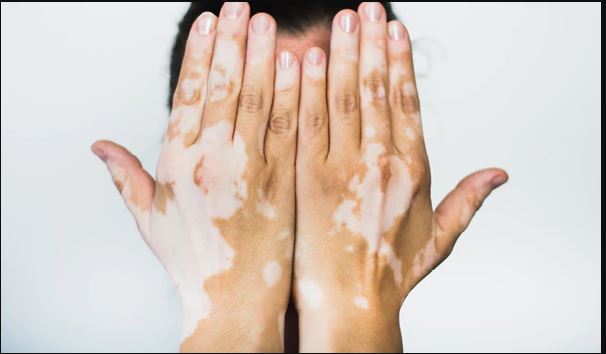T his is a skin condition in which white patches develop on the skin. Understanding the science behind vitiligo can result in more productive discussions between people living with the condition and their doctors. The most obvious symptom of vitiligo is patches of skin which lose color, but this condition is more than just cosmetic. It is an autoimmune condition that can have a profound impact on a person’s everyday life and people who have it are at greater risk for developing other autoimmune conditions.
People can develop vitiligo at any age, but approximately one-half of cases are diagnosed either in childhood or before someone turns 20. The first signs of vitiligo are white patches on the skin, which can develop anywhere on the body, including on the face, arms, hands, genitals, and buttocks.
The skin doesn’t have its characteristic color because it has lost its melanin. For some reason, the pigment-forming cells known as melanocytes have been destroyed. We don’t know why this happens. It might be an autoimmune condition, where your body’s defenses turn on your own cells instead of attacking invading germs. Although vitiligo affects all races equally, it’s more noticeable in dark-skinned people.
Sometimes the larger patches continue to widen and spread, but usually they stay in the same place for years. The location of smaller macules shifts and changes over time, as certain areas of skin lose and regain their pigments. Vitiligo varies in the amount of skin affected, with some patients experiencing few depigmented areas and others with widespread loss of skin color.
THE TYPES: Generalized- the most common type, when macules appear in various places on the body.
Segmental- restricted to one side of the body or one area, such as the hands or face.
Mucosal-affects mucous membranes of the mouth and/or the genitals.
Focal- a rare type in which the macules are in a small area and do not spread in a certain pattern within one to two years.
Trichome- there is a white or colorless center, then an area of lighter pigmentation, and then an area of normally colored skin.
Universal- another rare type of vitiligo, and one in which more than 80% of the skin of the body lacks pigment.
Vitiligo is not painful. However, you can get painful sunburns on the lighter patches of skin. It is important to protect yourself against the sun with measures like using sunscreen, staying out of the sun during the hours that it is strongest, and wearing protective clothing. Some people with vitiligo have reported having itchy skin sometimes, including before the depigmentation starts.
IS THERE A TREATMENT?
There is no cure for vitiligo. The goal of medical treatment is to create a uniform skin tone by either restoring color (repigmentation) or eliminating the remaining color (depigmentation). Common treatments include:
Camouflage therapy:
Using sunscreen with an SPF of 30 or higher. Also, the sunscreen should shield ultraviolet B light and ultraviolet A light (UVB and UVA). Use of sunscreens minimizes tanning, thereby limiting the contrast between affected and normal skin.
Makeups help camouflage depigmented areas.
Hair dyes if vitiligo affects the hair.

Depigmentation therapy with the drug monobenzone can be used if the disease is extensive. This medication is applied to pigmented patches of skin and will turn them white to match the areas of vitiligo.
Light therapy:
Narrow band ultraviolet B (NB-UVB) requires two to three treatment sessions per week for several months.
Excimer lasers emit a wavelength of ultraviolet light close to that of narrow band UVB. This is better for patients who do not have widespread or large lesions since it is delivered to small, targeted areas.
Combining oral psoralen and UVA (PUVA) is used to treat large areas of skin with vitiligo. This treatment is said to be very effective for people with vitiligo in the areas of the head, neck, trunk, upper arms and legs.
Surgery:
Autologous (from the patient) skin grafts: Skin is taken from one part of the patient and used to cover another part. Possible complications include scarring, infection or a failure to repigment. This might also be called mini grafting.
Micropigmentation: A type of tattooing that is usually applied to the lips of people affected by vitiligo.
Counseling:
Vitiligo can cause psychological distress and has the ability to affect a person’s outlook and social interactions. If this happens, your caregiver may suggest that you find a counselor or attend a support group.






























